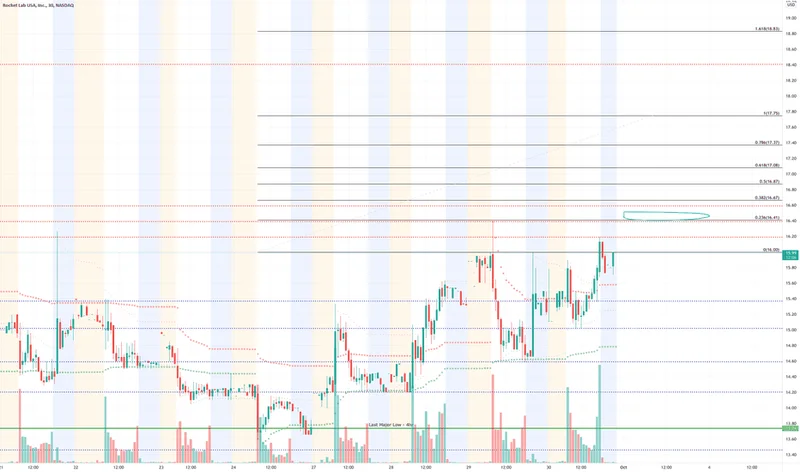Article Directory
We tend to think of space exploration in terms of singular, monumental events. The Apollo landing. The first shuttle launch. The deployment of the James Webb telescope. These are incredible, history-defining moments, but they frame our journey to the stars as a series of breathtaking, yet infrequent, leaps.
I believe we're missing the real revolution.
It’s not happening in one giant leap. It’s happening in dozens of small, consistent, and increasingly routine steps. It’s happening right now, and a company called Rocket Lab is providing one of the most compelling examples. When the news broke that they’d signed another multi-launch deal with the Japanese Earth-imaging firm iQPS, it might have looked like just another business transaction. A 7% premarket stock bump, another press release for the pile.
But if you look closer, you’re not seeing a transaction. You’re seeing a glimpse of the future of logistics—a future where low Earth orbit is no longer a destination, but a platform.
The Dawn of the Space Superhighway
For decades, getting a satellite into orbit was like commissioning a cathedral. It required immense planning, astronomical cost, and years of waiting for a single, bespoke launch window. If you missed it, you were out of luck. What Rocket Lab is building is something fundamentally different. It’s not a cathedral; it’s a highway. And with this new deal, they’re adding another on-ramp.
The agreement with iQPS is for three dedicated Electron missions starting in 2026. This brings the total number of launches booked by iQPS with Rocket Lab to a staggering seven. Think about that. One company, seven launches. This isn’t about sending up a flagship satellite and hoping for the best. This is about building an entire constellation, piece by piece, on a reliable schedule.

This is the kind of breakthrough that reminds me why I got into this field in the first place. The sheer cadence is what’s so transformative. Rocket Lab has already completed four launches for iQPS this year alone, with two of them happening within a single four-week span. That’s not exploration; that’s a finely tuned delivery service. It’s the Amazon Prime-ification of space access, and it changes everything. How can you plan for a future in orbit if you can't depend on getting there? What new businesses become possible when the launchpad operates with the predictability of a shipping port?
This is all made possible by a level of integration that’s just beautiful to see. Rocket Lab isn’t just selling a rocket ride. They’re providing iQPS with their Motorized Lightband separation system—in simpler terms, it’s like offering the perfect, custom-sized box and tape along with the delivery truck, ensuring the precious cargo is deployed with precision and care. It’s a seamless, end-to-end service. This vertical integration is the engine driving the whole paradigm shift.
Building the Future, One Launch at a Time
I’ve seen some financial analysts argue that the "true value story" for a company like Rocket Lab won't fully materialize until after 2030. I understand the sentiment from a market perspective—a view explored in articles like Rocket Lab’s True Value Story Starts After 2030, Here’s Why I’m Still Bullish (RKLB)—but from a technological and human perspective, I think it misses the magic of what’s happening right now.
Watching Rocket Lab ramp up its production to support 20 or more missions in 2025 is like watching the first railroad ties being laid across the American West in the 1860s. The people hammering those spikes weren’t thinking about the seamless, coast-to-coast economy of the 1920s, but every single spike was a necessary precondition for it. We are watching the foundational infrastructure for the next generation of the global economy being built, launch by launch.
The speed of this is just staggering—it means the gap between an idea for a satellite and its actual deployment in orbit is shrinking from a decade to mere months, which will unlock applications in climate science, instantaneous communication, and agricultural monitoring that we can barely even predict, a torrent of innovation waiting for the floodgates to open.
Of course, with this incredible new capability comes an immense responsibility. Paving a superhighway to orbit means we must also be its diligent traffic controllers and conscientious stewards. As we fill this new frontier with technology, we have a profound duty to manage orbital debris and ensure that space remains a shared resource for all of humanity. The power to build a new world in the sky comes with the obligation to keep it clean and safe. But what truly excites me is that for the first time, these conversations aren't just theoretical. They're practical, because the highway is finally open for business.
The Assembly Line to Orbit is Now Open
What we're witnessing isn't just one company's success. It's a fundamental change in our relationship with space. We are moving from the age of the explorer to the age of the settler. The shift from one-off missions to a predictable launch cadence is the single most important step in unlocking the true potential of the orbital economy. The barrier to entry isn't just lowering; it's evaporating. The question is no longer if we can get to space, but what incredible things we will choose to build now that we can get there whenever we want.



